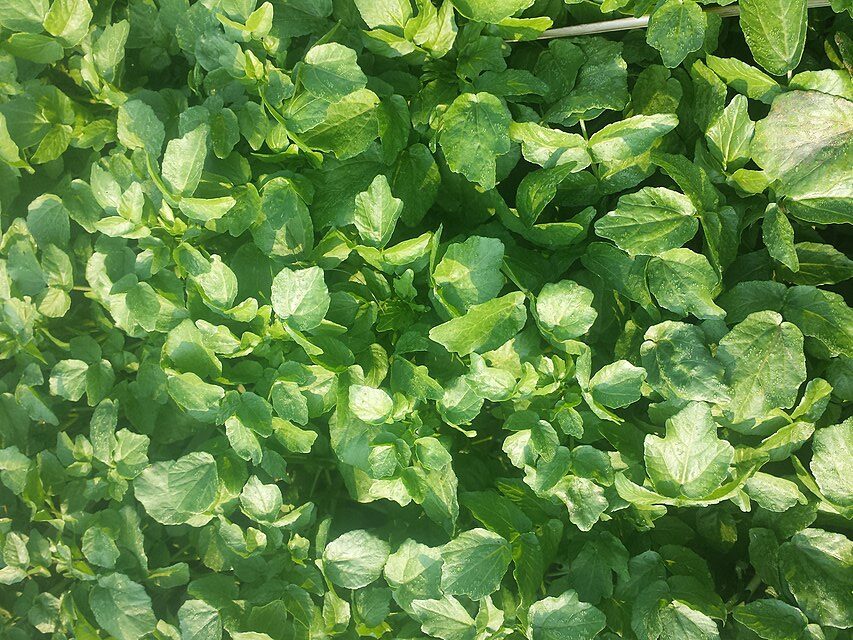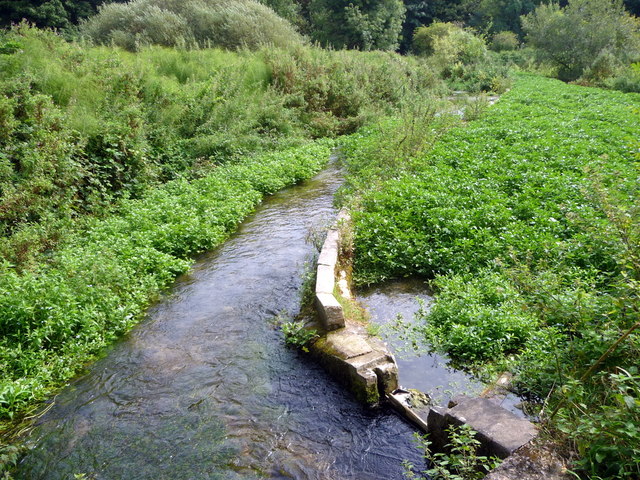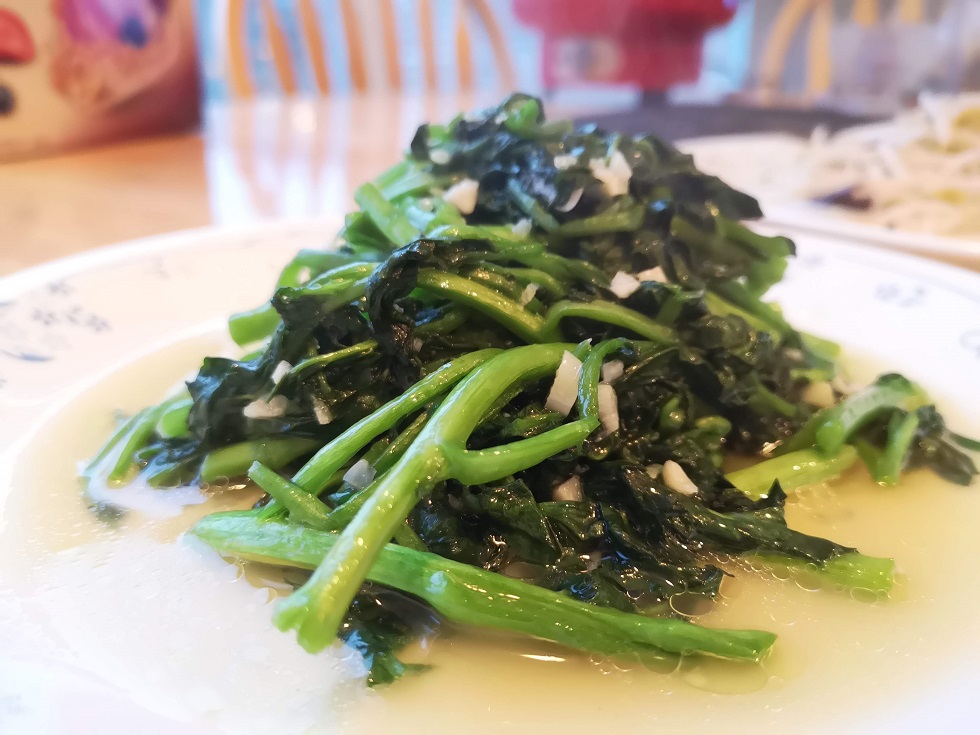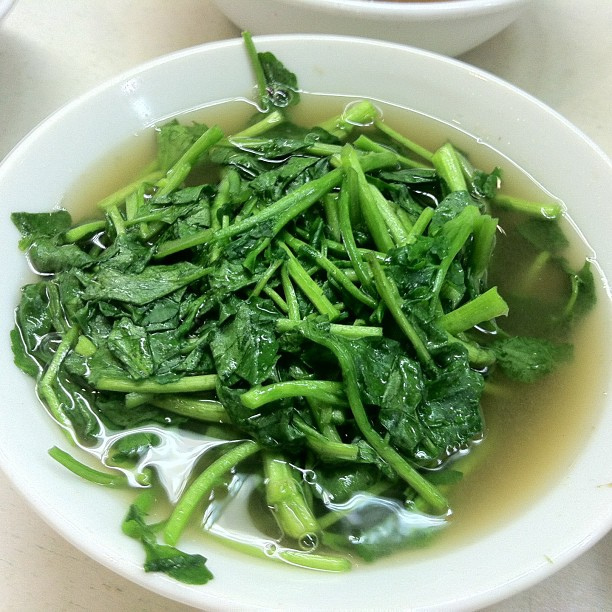How To Grow Watercress Without Soil: A Hydroponic Guide
The thought of growing any plant without soil might feel counterintuitive, even impossible to some. But let’s debunk that myth right now.
Growing watercress hydroponically is not only possible but it also offers numerous advantages over traditional gardening methods. Forget about the worry of soil-borne illnesses or bugs; hydroponic watercress cultivation eliminates that concern.
And if you’re wondering how exactly does one go about this process of growing watercress without soil? Well, we’ve got your back!

Table of Contents:
- The Wonders of Watercress
- The Health Benefits of Watercress
- Growing Watercress Without Soil – A Hands-Off Approach
- Creating the Ideal Environment for Growing Watercress
- How to Grow Organic Vegetables Like Watercress at Home
- Taking Care Of Your Watercress And Harvesting Them
- Your Reward: Harvesting Time
- Companion Plants For Your Garden Cresses
- Ways To Use Your Harvested Garden Cresses
- Tips For A Successful Hydroponic Gardening Experience
- FAQs in Relation to How to Grow Watercress Without Soil
- Conclusion
The Wonders of Watercress
Watercress, a peppery green vegetable that is often overlooked as merely a garnish on your plate, actually packs quite the nutritional punch. Naturally found in fresh water streams where it grows wild, this aquatic plant has been used for centuries both culinarily and medicinally.
In its natural environment or when grown indoors using hydroponics techniques – either way you choose to cultivate it – one thing remains consistent: The impressive health benefits offered by these leafy greens due to their high levels of vitamins A and C along with essential minerals like iron and calcium.

Traditional watercress beds
A Superfood Beyond Garnishing: Unpacking Watercress’ Nutritional Profile
If we were discussing superfoods – those nutrient-rich foods considered especially beneficial for our health – many might overlook ‘watercress’. However, packed with antioxidants which help protect our bodies against damage from free radicals, unstable molecules that can cause diseases including cancer, it’s worth reconsidering this humble veggie’s role in your diet.
- Packed with Vitamin C, an essential nutrient known for boosting immunity (45% RDA per 100g serving)
- Rich source of vitamin K which plays an important role in blood clotting and bone health (312% RDA per 100g serving)
- Fiber content aids digestion while eating cruciferous vegetables like watercress may lower risk factors associated with heart disease (4.1 g dietary fiber per 100g serving).
The Health Benefits of Watercress
Boasting an abundance of vitamins and minerals, including vitamin C, calcium, iron, and potassium – watercress is a nutrient-dense vegetable. It’s more than just an elegant garnish; it plays a vital role in maintaining optimal health.
Eating watercress has been associated with improved heart health due to its high dietary nitrate content that aids in lowering blood pressure. The antioxidants found within this leafy green can reduce the risk of chronic diseases like cancer by neutralizing harmful free radicals present inside our bodies.
Beyond physical benefits, regular consumption of watercress also contributes positively towards mental well-being. Its nutrient-rich profile supports brain function and could potentially slow cognitive decline linked to aging. Healthline provides additional information on these eating watercress health benefits.
Is Watercress Toxic for Pets?
A common query among pet owners considering adding watercress into their diet or garden pertains to whether it poses any threat to their furry friends’ well-being. While some plants are indeed toxic for pets if ingested excessively, rest assured that moderate amounts of wild watercress pose no harm at all.
Care should be taken though because overconsumption might lead to mild gastrointestinal upset in dogs and cats since they aren’t accustomed to digesting large quantities of leafy greens unlike humans. As always when introducing new foods into your pet’s diet, it’s best practice to consult with your vet first. The American Society for Prevention Cruelty Animals (ASPCA) confirms that while excessive consumption may cause diarrhea or vomiting due to its spiciness rather than toxicity per se, it is generally considered safe around household pets.
- If you’re cultivating hydroponically without soil, it’s essential to be extra vigilant in making sure any remaining pesticides or chemicals are completely removed from the foliage before giving them to animals. Remember, cleanliness is key to keeping both our gardens and furry companions healthy and happy.
Key Takeaway:
Watercress packs a nutritional punch, boosting heart health and brain function while posing no threat to pets when consumed moderately. However, cleanliness is crucial in hydroponic gardening to avoid harmful chemicals on the leaves.
Growing Watercress Without Soil – A Hands-Off Approach
When it comes to growing watercress, the traditional soil-based method is not your only option. In fact, there’s a hands-off approach that eliminates the need for dirt entirely.
This alternative process involves hydroponics, a form of agriculture where plants are grown in nutrient-rich water instead of soil. Ranging from basic home setups to large-scale commercial operations, hydroponic systems can vary in complexity.
Choosing Your Method – From Cuttings or Seeds?
The initial step in this journey towards becoming a successful grower guide for watercress without soil lies within making an important decision: cuttings or seeds? Both methods have their own unique set of advantages and challenges which should be considered carefully before proceeding further with your gardening adventure.
Cuttings involve taking pieces from mature plants and placing them directly into the hydroponic system. This technique tends to yield results faster than starting from seeds because you’re working with already developed plant parts speeding up growth time significantly.
If growing from seed sounds more appealing, due its potential variety benefits (as most heirloom varieties aren’t readily available as cuttings), keep in mind that patience will play a key role here since sprouts may take longer to appear above your chosen growth medium such rockwool cubes clay pebbles).
- Speed vs Variety: In essence both techniques hold merit depending on what matters most; if speed trumps all else then go ahead try out cutting propagation whereas those who prefer diversity might find seeding suits better their needs. Remember, each has pros and cons, so consider these factors wisely when deciding the best course of action. Moving forward in cultivating delicious nutritious crops at home, using innovative hands off watering systems – known widely throughout world today as simply ‘hydroponics’.
- Nature’s Way Is Not Always The Only Way: Mother Nature grows her bounty deep within earthy soils but, thanks to advancements in agricultural technology, we now possess the ability to replicate similar environments minus the mess associated with typical garden bed setups. With the added bonus of total control over environmental conditions including humidity, temperature, light exposure etc. Thus enabling us to achieve optimal yields regardless of the season outside our window.
- Pest Control Made Easy: No one enjoys dealing with pests, yet they seem an inevitable part of any outdoor or indoor gardening endeavor. Thankfully hydroponically grown crops tend to suffer less pest issues compared with their counterparts, primarily due to a lack of direct contact with the ground – hence limiting access for critters looking to snack on our green leaves.
Key Takeaway:
Growing watercress without soil, using hydroponics, is a hands-off approach that offers control over environmental conditions and less pest issues. You can start with either cuttings for quicker results or seeds for more variety. Remember, patience and wise decision-making are key to this innovative gardening adventure.
Creating the Ideal Environment for Growing Watercress
To cultivate a successful crop of watercress, one must recreate its natural environment. This involves focusing on aspects such as fresh water supply, light exposure, temperature control, and humidity management.
Climate & Aspect – What Does Watercress Prefer?
Luckily watercress is adaptable to varying climates and light conditions. However, it does have certain preferences which can help optimize growth if met correctly.
Naturally found in streams, in partial shade or full sun, with cool temperatures ranging from 50-70 degrees Fahrenheit (10-21 degrees Celsius), these are ideal conditions you should aim to replicate when growing your own batch at home.
Apart from maintaining proper lighting and temperature ranges, another crucial element lies with providing adequate humidity. High levels of moisture typically present around their native river habitats make them perfect candidates for hydroponic cultivation, where consistent watering schedules can be easily maintained without the risk of overwatering that traditional soil growers might face.
Fresh Water Requirements
As aquatic plants by nature, they require clean freshwater. Regularly replaced or topped up, every two weeks at least, to prevent the buildup of salts that could otherwise hinder plant development if left unchecked over time.
Sowing Seeds And Plant Depth Considerations
If seed harvesting seems like the preferred method to grow cresses, then sowing seeds approximately 1 cm deep would be recommended by most experienced gardeners out there. Providing ample space below the surface level alongside steady environmental factors diligently monitored till sprouts emerge after a seven-day post-sowing period is key here. Remember, patience plays a major role in this journey. Once they do start showing shoots, continue to keep a close eye, ensuring further progression into a mature, harvest-ready state down the line.
Key Takeaway:
Watercress thrives in a hydroponic setup, mimicking its natural river habitat. Key factors for successful growth include regular fresh water supply, cool temperatures between 50-70°F (10-21°C), ample light exposure, and sowing seeds about 1 cm deep. Patience is crucial to ensure healthy maturation.
How to Grow Organic Vegetables Like Watercress at Home
Growing organic vegetables such as watercress is a rewarding endeavor that provides you with fresh, nutritious produce right from your own home. Here are some methods and tips on how to grow this healthy green hydroponically.
How To Grow In Water From Cuttings
If soilless cultivation intrigues you, consider growing wild watercress from cuttings – an easy method for beginners. Start by selecting robust stems from mature plants and removing any leaves near the base of the stem.
Then place these cuttings in a container filled with clean freshwater. Within approximately one week, roots should start sprouting. Once they reach about 1 inch long, transfer them into larger containers containing nutrient-rich hydroponic solution for optimal growth.
How To Grow From Seeds
You can also choose seed harvesting watercress growing if it suits your preference or convenience better than using cuttings. Begin by filling up a pot or container having drainage holes placed over another vessel filled with fresh waters.
How To Grow In A Pond
If access to natural bodies of water like ponds isn’t an issue for you, then why not give pond cultivation of garden cresses a shot? It’s quite straightforward: get hold of planting baskets lined with coconut coir or other suitable materials that retain moisture, allowing for the free flow of nutrients through capillary action provided by the pond’s ecosystem itself.
Taking Care Of Your Watercress And Harvesting
Once you’ve planted your watercress seeds or cuttings, the journey to grow watercress doesn’t end there. It’s time for diligent care and maintenance of your plants.
Identifying And Managing Pests
Even in an indoor evironment the vibrant green leaves of flourishing watercress may draw in various pests, including snails, whiteflies, spider mites and lady beetles. These unwanted visitors have a knack for causing damage by nibbling on the foliage, which may hinder healthy growth.
A proactive approach is essential in managing these pesky invaders without harming your crop. Natural pest control methods are often recommended; introducing predatory insects like ladybugs that feed on harmful bugs could provide an effective solution while maintaining an organic gardening environment.
In addition to natural predators, using organic insecticidal soaps or oils sparingly can also help keep pests at bay. The key here is early identification followed by swift action.
Your Reward: Harvesting Time
The moment every hydroponics gardener looks forward to – harvesting. Typically 15-20 days from seeding when the plant has reached about 4 inches tall, it’s time to harvest those fresh crisp greens.

Time to enjoy your hydroponic watercress!
To ensure future yields, don’t pull up entire plants during harvesting but rather trim stems back, leaving approximately one inch above substrate level allowing regrowth. Here’s how experts suggest we go about this process.
Besides being delicious eaten raw in salads, sandwiches, etc., remember that freshly harvested garden cresses offer numerous health benefits thanks largely to its high nutritional content. Find out more benefits associated with incorporating this leafy green into our diets here.
Companion Plants For Your Garden Cresses
Garden cress doesn’t have to grow alone. It thrives when it’s paired with the right companion plants, and these companions can offer a multitude of benefits.
Chives: The Pest Deterrent
The first plant on our list is chives. These pungent herbs are known for their ability to ward off harmful insects that could pose threats to your watercress crop due to their strong scent acting as a natural deterrent.
Beyond just keeping pests at bay, chives also contribute valuable nutrients back into the hydroponic system’s water supply upon decomposition, thereby maintaining an optimal nutrient balance within your setup.
Peppermint: A Natural Repellent
Moving onto peppermint – another aromatic herb that doubles up as an excellent pest repellent thanks to its distinct smell which keeps various types of pests such as aphids and whiteflies away from your precious crops like garden cress.
In addition, peppermint grows vigorously, providing additional shade for more delicate crops like watercress during hotter periods or in sunnier climates where overheating or scorching leaves might be concerns you’d want mitigated effectively by this cool green ally.
Wintergreen: An Unexpected Ally
Last but certainly not least, we’ve got wintergreen. While perhaps less conventional than others mentioned here today – don’t underestimate what this little gem brings along with it. Wintergreen’s dense ground cover offers protection against substrate erosion while its small flowers attract beneficial insects aiding pollination processes if there are flowering plants nearby in proximity too.
Remember though, every hydroponic system will differ slightly depending upon factors such as light exposure levels, temperature control capabilities, etc., so do experiment with different combinations until you find what works best for yours.
Ways To Use Your Harvested Garden Cresses
Watercress is a versatile green that can add an exciting kick to your meals. This peppery plant not only brings flavor but also packs a nutritional punch. So how best can you utilize this superfood in your kitchen? Let’s explore.
In Salads
The distinct taste of garden cress makes it perfect for salads. It pairs well with other fresh vegetables like tomatoes and cucumbers while adding its unique spicy note.
If you’re feeling adventurous, Bon Appetit offers a Watercress Salad With Mustard Vinaigrette. The tangy mustard vinaigrette complements the crispness of watercress, creating an intriguing contrast on your palate.
In stir frys
There are many ways to enjoy your hydroponic watercress crop in a stirfry!

Watercress stirfried
In Soups
Soups are another excellent way to incorporate garden cresses into your diet. Jamie Oliver’s Watercress Soup Recipe, for instance, blends potatoes and onions with generous handfuls of fresh watercress. A comforting dish indeed.

Delcious nuttritious watercress soup
In Sandwiches & Wraps
A classic British sandwich features finely chopped hard-boiled eggs mixed with mayonnaise topped off with sprigs of crunchy watercress. Pairing these sandwiches with homemade potato chips. With a refreshing iced tea, it creates a satisfying lunch option.
Beyond sandwiches, wraps also benefit from the addition of fresh watercress. Grilled chicken, avocado chunks, a dab of Greek yogurt, chives for garnish and watercress crumbles as the finishing touch. These wraps pack a punch in terms of both flavor and nutrition, making them an ideal grab-and-go breakfast choice for busy mornings.
Don’t be afraid to get creative and explore the various ways you can incorporate watercress into your meals. Whether you enjoy it uncooked or cooked, this flexible superfood can be utilized in your own cooking area with lots of options.
Key Takeaway:
Watercress, a nutritional powerhouse and versatile green, can spice up your meals in various ways. It’s perfect for salads, soups, sandwiches and wraps due to its unique spicy note. Don’t be afraid to experiment with this superfood according to your culinary preferences.
Tips For A Successful Hydroponic Gardening Experience
Hydroponic gardening presents a unique set of challenges, but also immense rewards. Here are some expert tips to help you navigate this exciting journey and ensure your success in growing crops hydroponically at home.
Selecting Suitable Plants for Your Setup
The first step towards successful soilless farming is choosing the right plants. Some herbs and vegetables adapt better to water-based environments than others. Watercress, lettuce, spinach, and basil have proven themselves as excellent choices due to their fast growth rates and relatively low maintenance requirements.
Bear in mind that not every plant will thrive under these conditions; conducting thorough research on which ones do can save you from disappointment down the line.
Maintaining Ideal Growing Conditions
A critical aspect of successful hydroponics involves maintaining optimal growing conditions such as light exposure, temperature control, nutrient supply, and pH balance. Understanding each plant’s specific needs goes a long way toward ensuring healthy growth.
Paying attention to seemingly minor details like lighting hours per day or ideal temperatures might seem tedious, but they significantly impact your crop’s health and yield potential.
Nutrient Management Is Key
In traditional soil gardening, nutrients come naturally from organic matter decomposition, while in hydroponics, we need to provide them directly through nutrient solutions tailored specifically for our chosen crops’ needs. “The Importance Of Nutrients In Hydroponics” offers an extensive guide on creating balanced nutrient solutions based on specific crop requirements.
An important part of managing nutrients includes regular testing of solution pH levels since drastic changes might lead to nutrient lockout, preventing plants from absorbing essential elements properly.
Cleanliness And Pest Control Are Essential
To prevent disease or pest infestation, keeping your system clean is paramount; remember that prevention always beats cure when dealing with these issues. Regularly inspecting your plants helps detect early signs before they become serious problems, leading to potentially devastating losses if left unchecked. “Preventing Pests In Hydro Systems” provides valuable information on this topic.
Key Takeaway:
Hydroponic gardening requires careful plant selection, optimal growing conditions, nutrient management, and cleanliness for success. Remember to choose plants that thrive in water-based environments like watercress or lettuce. Maintain ideal light exposure, temperature control, nutrient supply and pH balance while keeping your system clean to prevent disease or pest infestation.
FAQs in Relation to How to Grow Watercress Without Soil
How do you grow watercress seeds without soil?
You can cultivate watercress seeds hydroponically by sowing them 1 cm deep in a container with drainage holes, placed over another vessel filled with fresh water.
How do you grow garden cress without soil?
Garden cress thrives in hydroponic systems. Start by placing the seeds on a wet cotton pad or rockwool cube and keep it moist until germination occurs.
Can watercress grow in water?
Absolutely, as an aquatic plant, watercress naturally grows near streams and rivers. It can thrive when grown directly in clean, nutrient-rich standing or flowing waters.
Can I grow watercress seeds in water?
Certainly. Water is ideal for sprouting your seeds. Place them into a shallow dish of clean mineral-rich waters and they will germinate within days.
Conclusion
Growing watercress without soil is not only possible, it’s also quite advantageous.
Hydroponics offers a hands-off approach to cultivating this superfood right in your home.
You’ve learned that whether you start from cuttings or seeds, the key lies in recreating the ideal environment for growth.
Fresh water, sunlight, and temperature control are all vital components of successful hydroponic gardening.
Caring for your plants involves vigilance against pests and timely harvesting once they’re ready after 15-20 days from seeding.
But don’t stop at just growing watercress!
The world of hydroponics opens up possibilities for other organic vegetables as well – think chives, peppermint, or wintergreen as companion plants.
Your harvested garden cresses can be used creatively in salads, soups, or sandwiches, adding a nutritious punch to your meals.
This journey doesn’t end here though; there’s so much more to explore within the realm of soilless gardening!
- Aeroponics: A Revolutionary Approach to Sustainable Farming
- 5 Budget Fridges For Storing Microgreens
- Maximizing Freshness: How To Store Microgreens Correctly
- How To Grow Watercress Without Soil: A Hydroponic Guide
- Exploring the Best Outdoor Grow Tents for Hydroponics
- How To Choose A Hydroponic Pump
- 10 Best Places To Buy Microgreen Seeds for Your Garden
- Prepare Your Hydroponic Garden for Winter: Essential Tips
- Your Guide on How To Choose A Hydroponic Reservoir Size